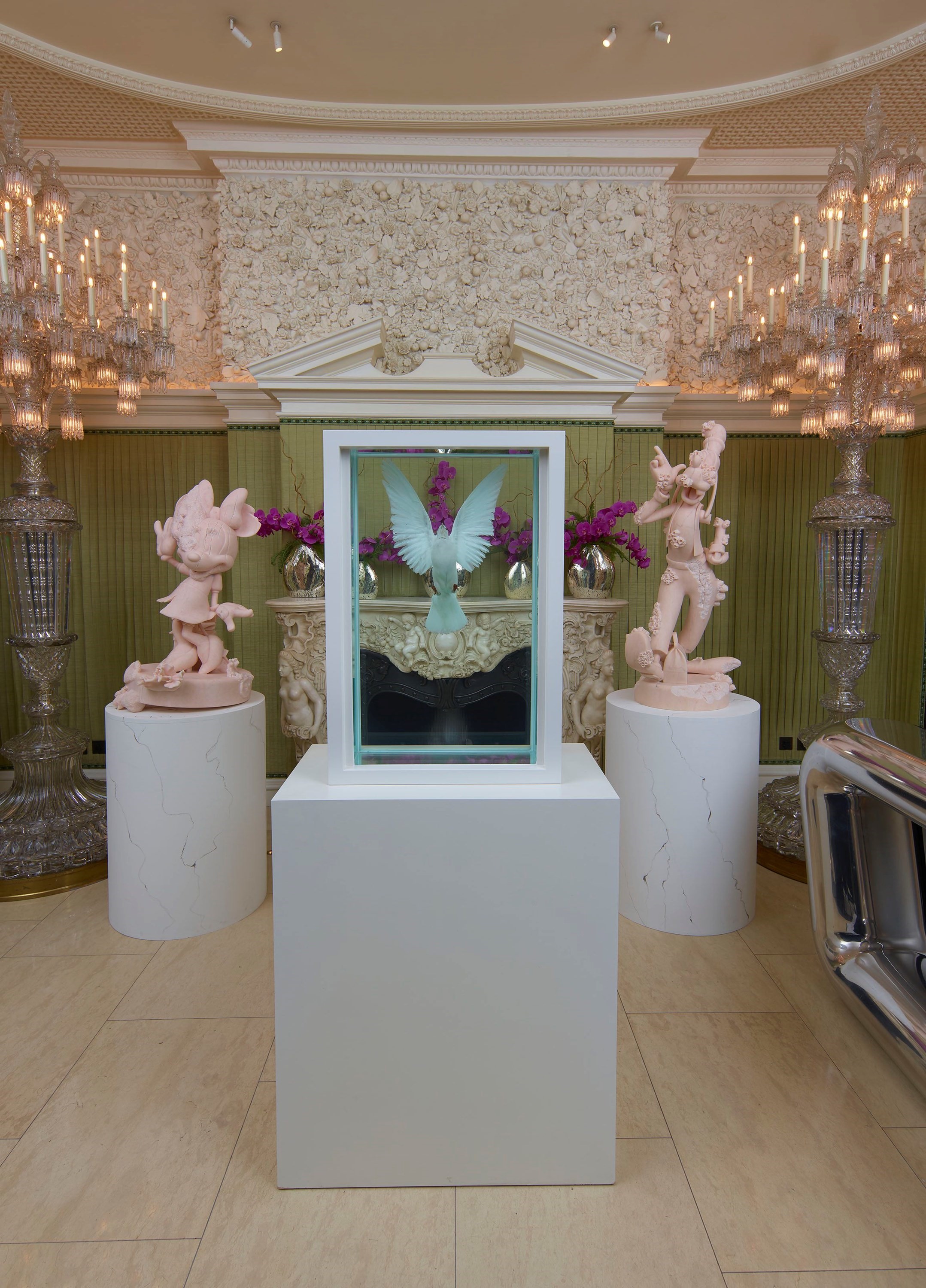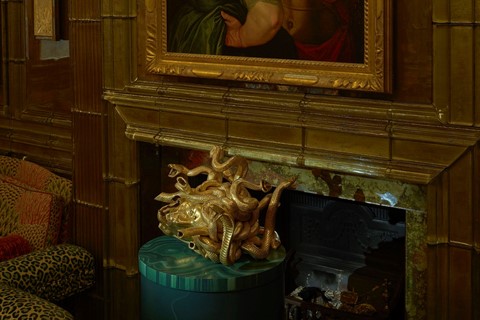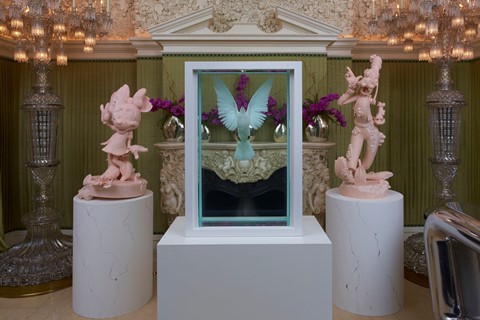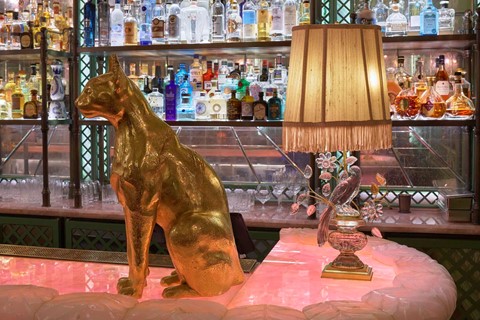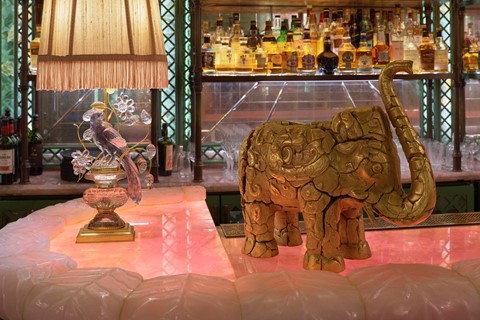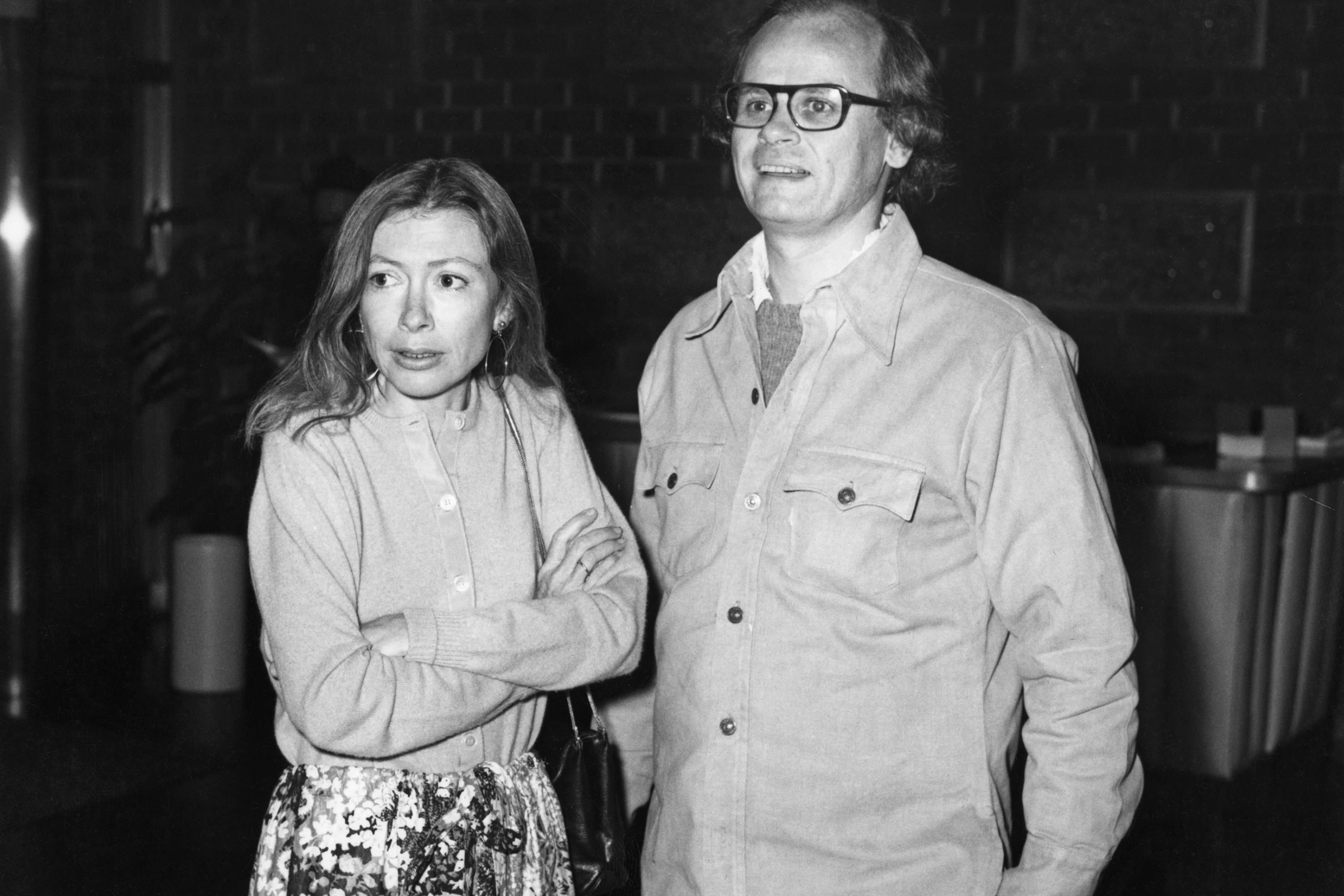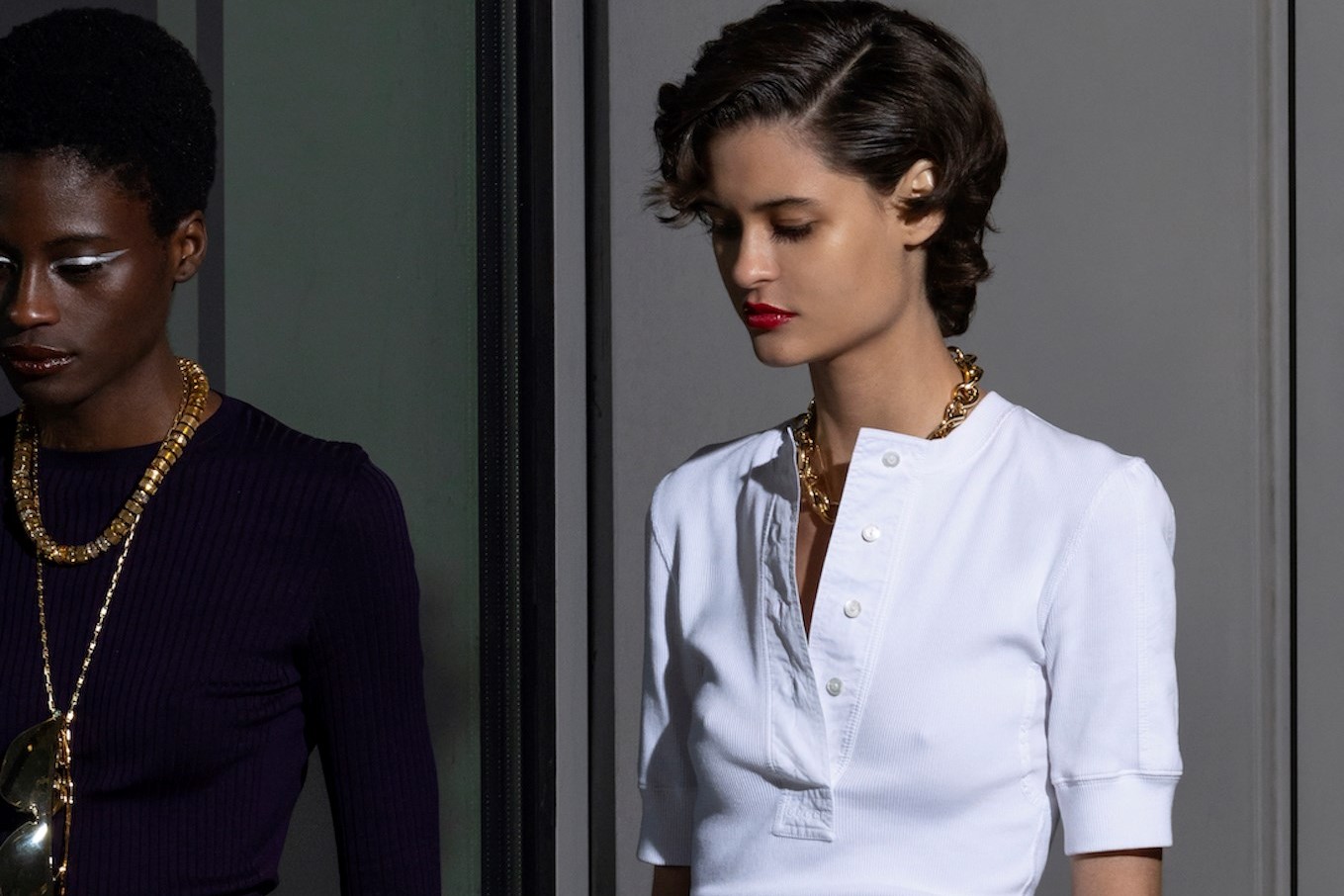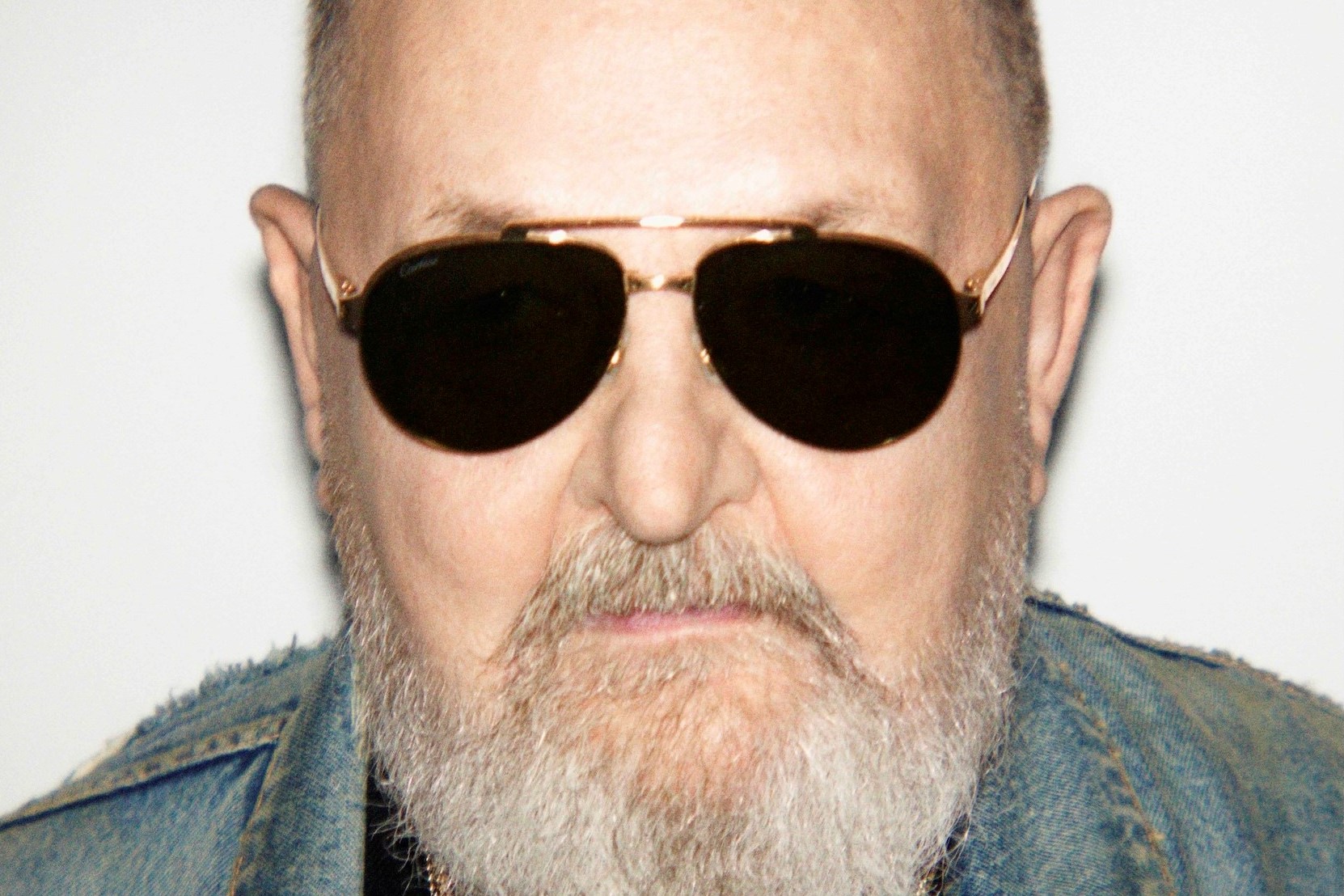For Damien Hirst, art belongs outside the lonely halls of a guarded museum. The British artist is all about “art you can live with”, favouring paintings and sculptors that can be celebrated in intimate environments like homes and bustling restaurants. “I love creating art for places where there are people,” he tells AnOther. He enjoys art that can be experienced and immersed into an ambience, which explains his recent collaboration with member’s club Annabel’s. In honour of Frieze Week 2021, Hirst showcased an exclusive presentation of previously unseen works from his 2017 Treasures series; a collection of sculptural relics from a fictional shipwreck off the coast of East Africa. His work explores linear time, cultural origin, and perceptions of relative status and value in the region, with every piece fitting seamlessly into the animal theme embedded in Annabel’s interior. “Art can often end up in dusty museums if you’re not careful,” he says. “I prefer it in people’s homes or spaces that people inhabit. It makes the art feel more alive.”
From his pioneering warehouse shows in the 80s to his famous 2007 sculpture For the Love of God – a human skull coated with 8,601 diamonds – Hirst is the UK’s most influential (and wealthiest) artist to date. But like many in the art world, he came to a financial halt at the height of the pandemic last year and was forced to cut down his army of staff to go at it alone. The result wasn’t too shabby: 107 cherry blossom paintings created in lockdown at a rented Hammersmith studio, and the launch of his very first NFTs initiative, The Currency, which involved selling 10,000 unique hand-painted dot-covered works on paper, with each one corresponding to a non-fungible token and making him over $25,000. Then came the Drake album cover, where he reimagined his iconic spot painting to fit the theme of the rapper’s Certified Lover Boy project. Here, Hirst tells AnOther about that encounter, his latest endeavours and his proudest career moments, whilst reflecting on his most conflicting piece of work he has ever created.
Sagal Mohammed: Tell us about the presentation you curated for Annabel’s. How did that come together?
Damien Hirst: I’ve done a lot of work with Richard Caring before. I did some work for his restaurant Sexy Fish and I’ve also been working on art for a new restaurant he’s opening in London too, so we’ve done quite a few things together. I also did the huge pegasus for the Brasserie of Light restaurant in Selfridges, so when Frieze week was coming up he called me and asked if I could curate something for Annabel’s.
SM: Your work is incredibly famous, but do you collect pieces by other artists for your own home?
DH: Yes, I buy other artists’ work all the time. I actually had a Jeff Koons sculpture, which is one of these vacuum cleaner pieces, in my living room on the wall for years. You could turn it on and off and my kids play with it. Then I lent it to the Pompidou museum in Paris and I took my kids to see the show and when we were there, my five-year-old touched it and the guard went “don’t touch” and he was really confused. He said, “But that’s ours dad. It’s in our living room.” He couldn’t understand it.
I love Jeff’s work. I also have a lot of Banksy, my kids love Banksy. I once said to one of my kids you can have whatever you like from my collection in your bedroom, what would you like? And he said, “can I take your spot painting out and have a Banksy?” I was gutted.
“I just have silly ideas, and when they’re silly enough I want to see them become real” – Damien Hirst
SM: You’ve been around for a long time. What would you say remains your main source of inspiration?
DH: I just have silly ideas, and when they’re silly enough I want to see them become real. I’ve got a show at the Gagosian on Britannia Street at the moment which is about drug busts. I created these drug seizures because I’d seen pictures of them in the newspaper and they just looked so great. It was all about these naughty boys who had drugs and then they seized them all at customs, so I got in my studio and started making packs of cocaine and wrapping them all up in different coloured masking tape. When the guys in my studio were making them – I just bought bits of foam to wrap up, there were no drugs in them – they said, do you think they look good enough? I said, do you want to drive them up to Calais and back to see? [Laughs]. I always have ideas. I just think that way.
SM: What kind of space do you like to be in when you’re creating? Are you usually surrounded by people or do you like to be left alone?
DH: I’ve always had people. I’m a Gemini, I like people. Before Covid I had two or three assistants helping me clean my brushes and stuff and I thought I was on my own. To me, that was being on your own, even though we were all there, playing music, cracking jokes and having lunch together. I thought “yep, this is what it’s like to paint on your own”. Then Covid hit and they all went into isolation and that’s when I realised what working on your own is really like. Then I found that I didn’t play music, I actually like working in complete silence. I just used to let everyone else play theirs.
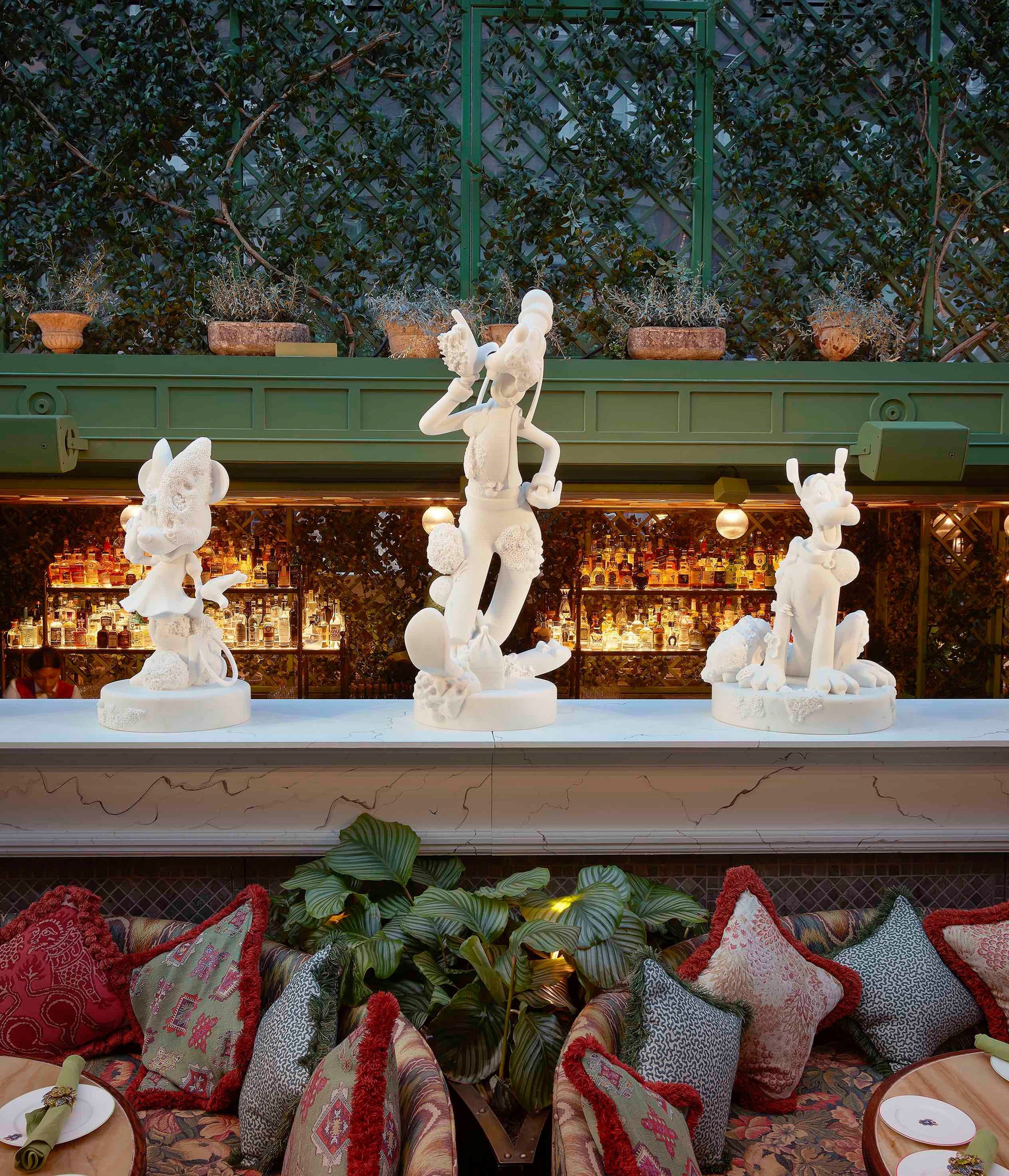
SM: Do you remember the first piece of art you created?
DH: I remember being in art class and throwing paint around, and messing it all up with all my friends. We would just pour the paint on and go dab, dab, dab and say “haha, modern art” thinking we were making modern art when we didn’t even know what it was. I was brought up Catholic so I remember I did a little drawing of me praying to Jesus, a guy with a moustache. I don’t know where that is now.
I also remember there used to be a TV program called Vision On where you used to have to send drawings in and I never got one accepted. I sent loads into the BBC and they threw them all away. All the kids that sent their drawings in never got them back. You either get them in the gallery on the program or they’d throw them all away because they couldn’t afford stamps to send them back at the time.
SM: What would you say has been your proudest career moment so far?
DH: I’ve got a spot painting on Mars, I think that’s pretty good. We sent one up to Mars about ten or 15 years ago but then it crash-landed. Then we recently received a photograph showing that it had actually arrived. It didn’t get a lot of press but when I think about that I just think you know, after going to art school and becoming an artist, how the hell do you end up with a spot painting on Mars? It’s just unbelievable.
SM: How pivotal do you think going to art school was to your career?
DH: Art school is amazing, it totally changes everything. They blew my mind. I went to Jacob Kramer in Leeds and did a foundation for a year, I then went to Goldsmiths for three years. The great thing about Goldsmith’s was that they taught you how to be an artist rather than just how to paint or anything. All the tutors were well-known famous artists, so from day one they started treating me like an artist. You had to justify everything you were making and explain why.
“After going to art school and becoming an artist, how the hell do you end up with a spot painting on Mars? It’s just unbelievable” – Damien Hirst
SM: It’s no secret that you have a lot of famous fans who love your work, and you recently worked with Drake on his album cover for Certified Lover Boy. Who has been your best celebrity customer?
DH: I love Ed Sheeran because he’s just such a beauty guy. I think with a lot of famous people you meet them and they’re a bit of a letdown. I’ve met lots of famous people in my life but not many who are actually great in real life. Joe Strummer from The Clash became a great friend of mine and he was my hero when I was a student, so it was amazing to meet him and not be let down. Drake is also unbelievable. I love Drake. Him and Ed both bought some art, that’s how I met them. A lot of rich people want to get stuff for free, so it’s nice when someone just walks in and spends loads of money to buy a lot of your stuff and is really happy with it, like Drake. Then he asked me to do his album cover and I did it. I did one for Ed a few years ago too, his Divide album. They’re both just such great people, very down to earth and humble.
SM: A lot of your work is very intricate and you’re constantly experimenting with new materials. What has been your most difficult piece to complete?
DH: I’ve had a few, but I think the diamond skull sculpture was tricky because I was buying diamonds and they were expensive, and I was buying them in sections. In the end I couldn’t afford the diamond on the forehead because it was like five or six million to buy. I remember being worried about spending so much money on an artwork that I didn’t even know was any good, or if people were going to like it. I was making a lot of money at the time and I didn’t really know what to do with it, which is why I made the diamond skull. I remember thinking artists make art from what’s around them, so if you’re surrounded by loads of money then you should just make something about money.
As I was coming up with this idea, I was spending millions and millions on diamonds because I needed 601 diamonds in the skull so I kept buying them until I had enough to make it. Then I began worrying and thinking, is it the right thing to do? I think it’s a lot easier to make art when you don’t have any money than it is when you do have money. Money complicates everything. People need it so you have to respect it and then you also have to find a way to live without it. When I was young we didn’t have any money. I remember we used to have the electricity cut off so I have a strange relationship with money anyway. I try to pretend I don’t care about it but everybody does. I suppose that’s why it’s challenging because I do think, “am I wasting it? Am I throwing it away? What if it runs out, am I going to go back to no electricity?” You have all these fears and shit to deal with.
SM: Finally, what direction do you think the art world is heading in, and does it excite you?
DH: Art is a reflection of the world we live in and there’s always going to be people doing that, I hope. But I love NFTs, it’s a whole new world. And I think in that world, it’s all about community and that’s what people miss. Everyone is complaining about NFTs, but people who are not connected physically but through the internet can trade and are able to connect through stuff. That’s really exciting.
